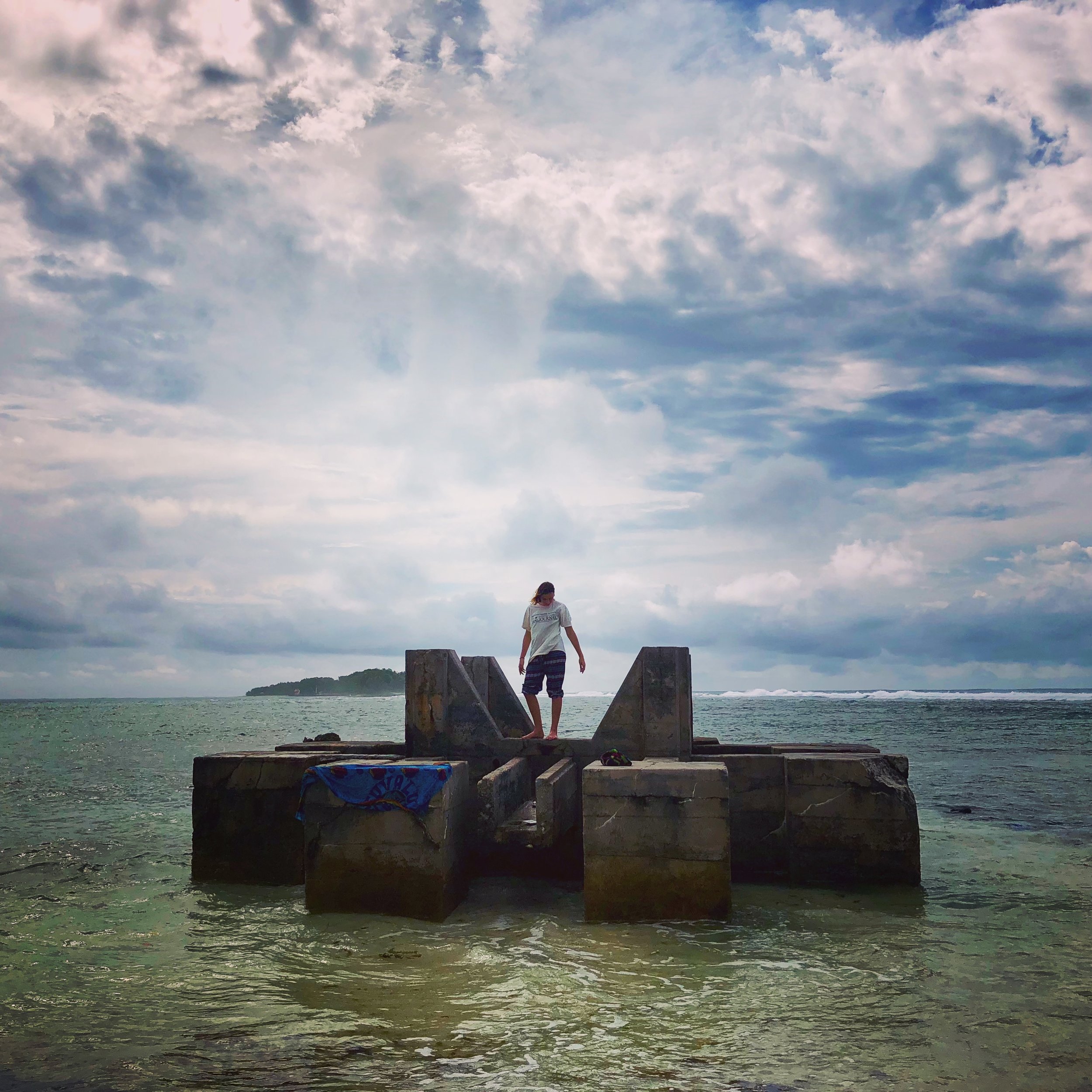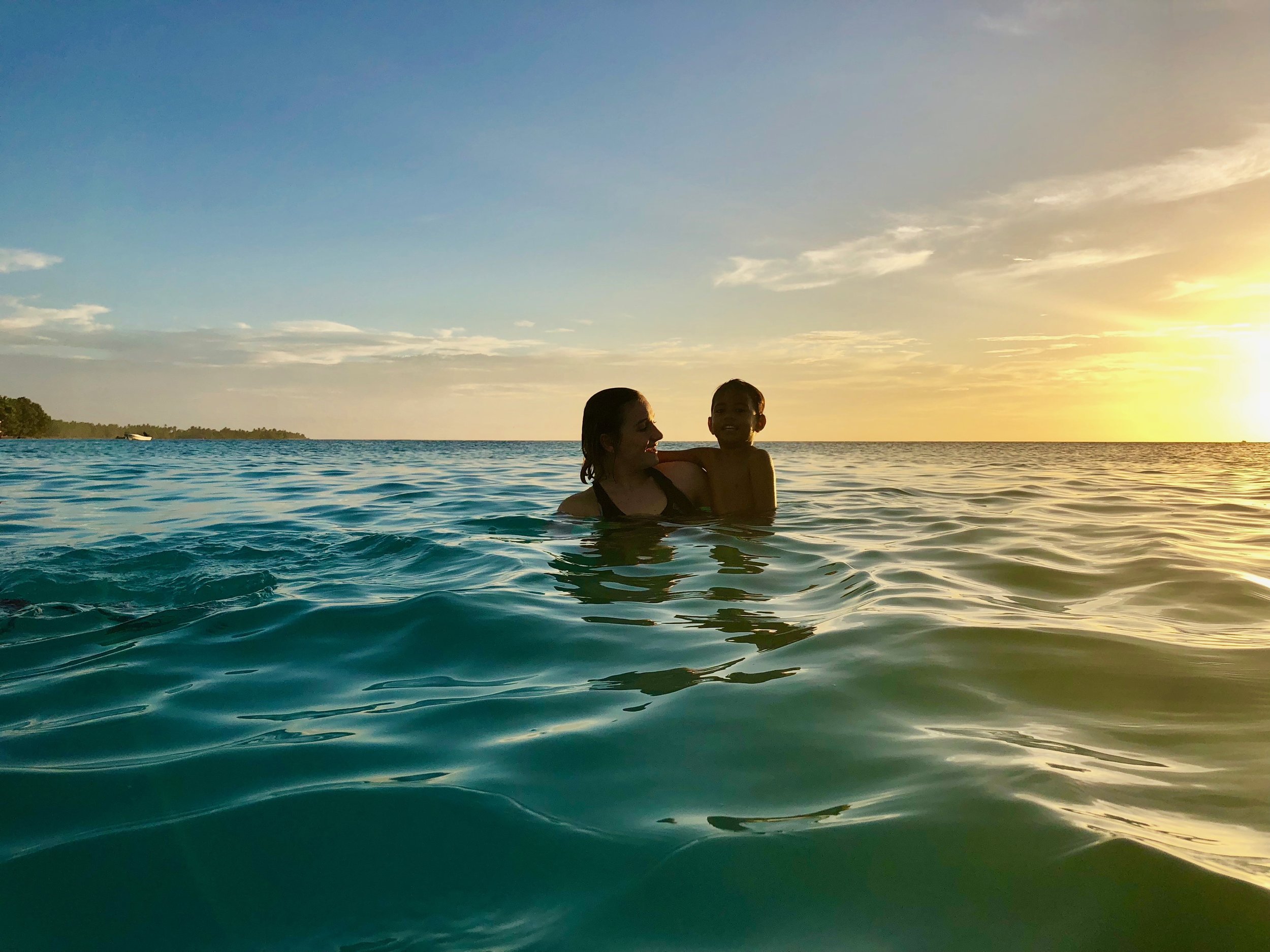I have worked in quite a few places over my life, but hardly any get to the level of uniqueness of Tuvalu… While everyone was in Rome at what looks like a very successful FAO COFI 2018, the rest of the fishing world was just doing their jobs far from the limelight. In my case, I was working with my colleagues from the Tuvalu Fisheries Department.
There is plenty of info on the web about the remoteness and the challenges faced by Tuvalu, so I’m not going to repeat what is there already. But from the fisheries perspective, it punches above its category, so I was very much looking forward to coming back.
My job was to support the Tuvalu Fisheries Department with a combination of PSM best practices, Transhipment Controls and Section 7 of the EU Catch Certificates under a mission for FFA (and also because as you can see on the right has the coolest logo in the world – designed by a former compliance officer).
With PSM, of course, I mean Port State Measures, which are requirements established or interventions undertaken by which a foreign fishing vessel must comply with or is subjected to as a condition for the use of ports within a state.
Tuvalu with 163 transhipments in Funafuti during 2017 and 99 up to date in 2018 has an important role as a major transhipment port state in the Pacific.
The objective of this work is not explicitly aimed at implementing the FAO PSMA, instead, it seeks to achieve arrangements that are consistent with the purposes of the FAO PSMA. The decision to ratify the FAO PSMA, or implement alternative PSM arrangements, is the sole discretion of the Tuvalu government, and those decisions go way above my pay level!
Tuvalu already covers the key elements regarding logistics, capacity building, institutional presence, control systems and IT support required to meet the need for PSM best practices and the EU CC expectations for transhipments. And while it has robust systems in place for vessels arrivals and inspections, as in other countries in the region only the essential PSM elements of information analysis before vessel arrival and the conditionality of port use and further transhipment monitoring wasn't clearly established.
These essential PSM requirements are enhanced by the recent (Dec 2017) WCPFC PSM CMM to which Tuvalu will need to abide at some stage, so the 1st part of the work focused on the standardisation of port entry clearance and the operational logistics of the process.
A big part of the challenge is to adapt the ideal concepts around these best practices to the realities of the technology available in Tuvalu (particularly in regards internet bandwidth)
The 1st part of the work is somewhat linear since only vessels licensed to fish in Tuvalu, under PNA arrangement and US Treaty are allowed tranship in Tuvalu, so this narrows the issues of vessels identity for us.
The process starts with the masters announcing the intention of port entry to TVF with 48 hrs notice, and this is happening as planned. The only addition we did is the date and port of the last departure, which allows narrowing the compliance analysis of the trip we are to asses prior the vessel arrival.
Differently to other parts of the world, denying Port Entry per se would hardly ever occur (as vessels need to be licensed to fish to tranship here, and fish landing are highly unlikely) yet some scenarios were incorporated in the soP.
Then we trained on the procedures for developing an Arriving Vessel Intelligence Report that would be used for the authorisation of port use. This document is based on assessing the vessels trip information based on information available to the Compliance officers through FFA RIMF and iFIMS. This check includes among others: FFA VoI, risk index and VMS track for the trip length, licensing for the areas fished, eForms information (when available) and eObs (when available in particular Gen 3 data).
These information sources provide the required intelligence, which along the compliance risk identification related to the type of vessel will determine the scope and depth of the inspection
The arrival is then listed in the port operations whiteboard (see below) and communicate the approval back to the master, and the boarding is scheduled, and the boarding logistics set up.
A big part of port operations and PSM is to know what, when, where and who is doing what. The whiteboard is such low cost but a really useful tool that provides a snapshot of what is happening in the port to everyone in the office and the other agencies. There should be a total correlation of what happens in the lagoon and the wall… simple as that. I have set them up in many parts of the Pcific , and it does work.
Below is the training example I use:
Example of a port operations white board, all names are ficticious, for illustrative purposes only
Anyway, when the vessel arrives, the boarding party brings with them the details of the intelligence report, these are typically around establishing where manoeuvring consistent with fishing activities (inferred by speed changes and the manoeuvring patterns) are in EEZ that correlate to licensing, suspicious stops with proximity analysis, and so on, and contrasting all these with the information in the on-board logbooks, records, and so on… (not going to spill all the beans here 😎
Point is that if all is clear and the legality of the catch established, then the vessel is authorised to tranship catch, otherwise they are not allowed to use port until the situation is cleared up and if necessary the affected parties, i.e. coastal state where the alleged problem took place and flag state sort it out, there also is a role for the port state to be involved on behalf of the parties… but believe me that "don't let a vessel tranship" and "don't let them leave" hurts the bottom line a lot… sometimes more than a fine!
When transhipment is authorised, we deploy “Monitors” on board, the monitors are usually “off duty” observers that get to supplement their earning while not at sea. While these monitors are Tuvaluan observers, they report to the Compliance Unit and not to the Observers Unit for this type work. The functions of the monitors are
- Record estimates of catch volume and composition
- Record the presence of species of interest
- Record potential MARPOL contraventions
- Provide the data to the compliance unit
Now regarding weights, these were usually "estimated weights” based on the estimations of the weight in the “slings” passing from the FV to the carrier.
Yet industry (mostly Korean vessels and some agents), are increasingly using crane scales such as the one in the image on the right.
This option could be of particular interest to Tuvalu since their transhipment fees are based on charges per ton; therefore the better resolution, the better income, so over the near future we will be running a trial with these.
The set up is relatively straight forwards; port monitors hang the scale on the crane hook and switch it on. These scales have shock resistant steel frame and LED display, but most importantly a wireless remote control facilitates the weighing operations.
The remote control can send commands to the crane scale but most importantly monitors the scale’s status and displays the weighing information within 200 meters in line of sight.
Furthermore, many models have a non-volatile data memory of 1500 to 2000 weighing results and a summing function, all the necessary data can be transferred to a PC or tablet for further processing.
The equipment (to be owned by the TFD) can be carried on board before the starts of transhipment and locked to crane hook as a condition of transhipment. The remote unit can be used while the monitors are there or are locked away and keep operating while the monitors are not on board.
The scale is “tared” by using putting all the cargo nets into one and weight them, and then dividing the total weight by the number of nets and using the average as tare (i.e. 10 nets come to a total of 80kg; hence the tare is 8kg). All the nets weighed are then “precinct” with a cable tire or some colour strings, and those are the only ones allowed to be used.
I have been proposing this setup, and I believe in it… It has quite a few advantages since it offers better data definition that relying purely on the logsheet (which impacts then stock assessments and management decisions), but I know that crew, captains and agents have a vested interest on this too… since wages depend on catch volumes, and as most of these loads would be only really “weight in” at the factories doors in Thailand or Vietnam in months time… knowing with better accuracy how much has been transhipped helps everyone.
Once transhipment is finished, the vessels (either PS and carriers) need to let fisheries know with 24 hrs their intention to depart as be cleared by the compliance guys. The clearance, besides checking on the conditions of vessels and observer, implies inspecting the wells and dry lockers for catch retained and not declared, if there is catch on board (some countries allow that others don't) then we record species and estimated volumes based on master’s appraisal, and have available on the system and record it in the vessels logbook, so the next port is aware.
In the case of Carriers, the departure procedure is a bit more complicated, since we compare the data for each of the Fishing Vessels that had transhipped to that carrier with our records and the mate's receipts and the pre and the post transhipment carrier’s hatch plan.
In case of differences officer investigates the reasons, and if those are not fully explained, it communicates with the Port Authority and stops the departure of the carrier until the differences are cleared. Otherwise, the vessels are free to go and gets off the whiteboard, and the data is all collected as to deal with section 7 of the EU Catch cert
Section 7 of the catch cert is a bit of a dog’s breakfast, to be honest… just when you read the section and It says “date” (like if transhipments are done in only 1 day) and “port of landing” while transhipment is actually defined (by the EU!) as in between two vessels, hence no actual landing is implied. Landing is putting the fish on land (and been corrected that is defined in the EU legislation CR (EC) No 1224/2009) ‘landing’ means the initial unloading of any quantity of fisheries products from on board a fishing vessel to land - Gracias Ignacio!) .
The term “port area” is also not defined either but the general view on this is that it refers to being around a “port” where an anchored vessel is approached by another one to transship. However, no official explanation has been given to date.
While not clearly explained in the regulations or manuals, this is the only part of the CC that requires the signature from the Port State instead of the Flag State. So vessels flagged in Country “A” tranship at a port in Country “B”. Country “A” is responsible for the validation of the CC, but country “B “is responsible for authorising the transhipment.
The transhipment can occur before the CC certificates are raised and validated (because in many cases there still no firm buyer for the fish) or because the fish has not been landed or processed at the destination which may or may not be the Flag State.
This a difficulty for the Port State as if they were to sign Section 7 at the time of the transhipment, they’ll sign an “empty” CC, with information provided by the captain or agent. Unless the Flag State is really “onto it” and able to provide a validated CC based on reliable estimates provided by the captain via the logbook and/or observers, prior the transhipment (there is no evidence of this ever being the case).
DG MARE in one of its notes proposes that the Port State signs the non validated CC; however this can be seen as a not showing sufficient due diligence by the Port State CA.
Alternatively, they need to keep the records of the transhipment authorisation on file, until such a time the processors of the fish that was transhipped request the CC from the Flag State who can then issue the CC which can then go to the Port State for section 7 signature.
In the original manual, the EU said that:
The EC would like to emphasise that at the stage of transhipment in port the catch certificate cannot contain information regarding the estimated weight provided in Section 3. However, all the other information provided in the Sections 2, 3, 4 and 5 should be made available by the shipowner/exporter.
Of course, we cannot modify any part of the EU CC, nor is our job to challenge whatever is written by the flag state in the cert, so we just keep all the records associated to the authorisation and request that the CC has Sections 2, 3, 4 and 5 complete
As it is now, in my opinion, the operational side of section 7 still requires either a level of jeopardy from the Flag State or from the Port State… and of course, my interest / work is to shield the Pacific island port states from any further problems with the EU.
Other than that, it was awesome to work with the solid crew from Tuvalu Fisheries Department, the officers are really focused and cool, their boarding boats are excellent and their attitude really positive and efficient. And it that wasn't enough, their new office is really nice.
Furthermore, I'm very thankfull to them for being totally cool for allowing me to do this mission with my daughter, it has been very special for her... what I appreciate the most of working in the Pacific is that the importance of family does not need to be explained.
Not bad as a after work place to hang out every day...
My 13 years old daughter Kika had a great time and loved the uniqueness of Tuvalu and its people!
Fakafetai Lasi Tuvalu.









